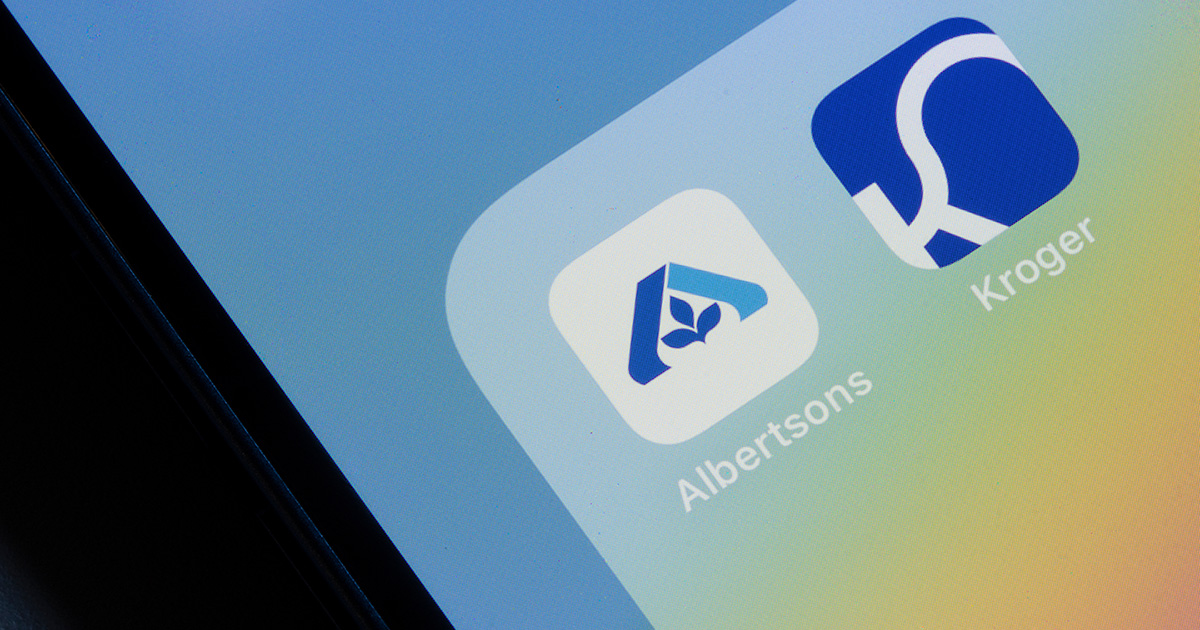
The proposed merging of Krogers and Albertsons, North America’s two largest supermarket chains, was announced in September 2022. But backlash ensued, culminating in the Federal Trade Commission suing to block the $24.6 billion Kroger acquisition of its second-largest competitor.
The deal would bring under a single banner the likes of Kroger, Ralphs and Harris Teeter with Albertsons, Safeway, Acme and Jewel-Osco. That’s nearly 5,000 stores across 48 states and D.C., plus 66 distribution centers, 52 manufacturing plants, 3,972 pharmacies, and 2,015 fuel centers. However – according to the FTC in its complaint before an administrative judge at the agency, this would eliminate competition and lead to higher prices for millions of Americans.
The agency also filed a suit with the U.S. District Court in Oregon for a temporary injunction blocking the merger. That lawsuit was joined by the attorneys general of eight states and the D.C. In February 2024, the Colorado Attorney General also filed a lawsuit, saying consumers fear the merger "would lead to stores closing, higher prices, fewer jobs, worse customer service, and less resilient supply chains.”
Also in the meantime and on the academic front, Clinical Professor Emerita Susan White for the University of Maryland’s Robert H. Smith School of Business co-authored a “Krogers and Albertsons - A Good Match?” case study, which was selected as one of six winning cases used at the 2024 John Molson MBA International Case Competition, held recently in Montreal, Canada, and widely regarded as the world’s largest, oldest and most prestigious event of its kind.
White, who co-authored the case with Carlos Trejo-Pech at the University of Tennessee Institute of Agriculture, has taught corporate finance for Smith undergrads and MBAs and has focused her research on case studies. For the Molson competition, she examined Kroger's purchase of Albertsons and its antitrust implications.
She notes regulators historically scrutinize a grocery-industry merger’s impact on competitor traditional grocery stores located near the merged company locations. “Kroger and Albertsons contend that this should no longer be the standard,” she says. “They argue that the grocery industry had changed, and those changes were accelerated by the pandemic in 2020-23, with many more options for consumers than just their neighborhood traditional grocery store.”
The shifted landscape is exemplified by “Kroger’s focus on competing with department stores (i.e., non-traditional grocery stores) like Target and Walmart and with alternative, more recent grocery store models like Amazon-Whole Foods,” White says.
She reiterates that the historical FTC scrutiny has focused on traditional grocers for comparison purposes and has not considered department stores or big box warehouses like Costco, or dollar stores, which also sell groceries. “An example of how the traditional grocery business is changing is Kroger’s addition of providing restaurant meals, prepared in store-owned kitchens that consumers could either pick up at the store or have delivered,” she says. “Another example of the changing dynamics is the 1,000-plus Starbucks located within Kroger stores.”
She adds, “The reality is that the grocery sector is changing rapidly, which may lead the FTC to change its approach to evaluate such megamergers as Kroger-Albertsons. However, there’s been no indication of such occurring.”
Another angle addressed in the case by White and Trejo-Pech is the merging companies gesturing to preserve competition by agreeing to sell 413 stores to C&S Wholesale Grocers – a nod to Albertsons 2015 purchase of Safeway in 2015, prompted by an FTC requirement of Albertsons in that merger to sell 168 stores in those affected areas. However, the American Antitrust Institute in a letter to the FTC noted some of the stores Albertsons divested in either shut down or were reacquired by Albertsons. And the FTC’s current complaint states that the Kroger-Albertsons proposed divestiture isn’t enough: It would create “a hodgepodge of unconnected stores, banners, brands and other assets” that wouldn’t be a true rival to the combined Kroger and Albertsons.”
White says Kroger has collectively countered the criticism by stating that it would continue to commit to lowering prices and that the merger would expand fresh food access to areas with limited service. “Kroger also said the merger would enhance its delivery channels, increasing its e-commerce capabilities,” she says. Kroger has increased its online presence substantially in the past and plans to continue growing in this area. In Florida, for instance, the firm had no physical stores but instead owned warehouses that deliver online orders.”
And as part of its response to the criticism, the company said it would cooperate and work with the FTC – hence the proposed sale to C&S.
White’s case was among those given to students representing 36 teams from around the globe, who presented their feasible solutions and detailed plans of action before panels of live judges in the event organized by the John Molson School of Business at Concordia University.
Media Contact
Greg Muraski
Media Relations Manager
301-405-5283
301-892-0973 Mobile
gmuraski@umd.edu
Get Smith Brain Trust Delivered To Your Inbox Every Week
Business moves fast in the 21st century. Stay one step ahead with bite-sized business insights from the Smith School's world-class faculty.